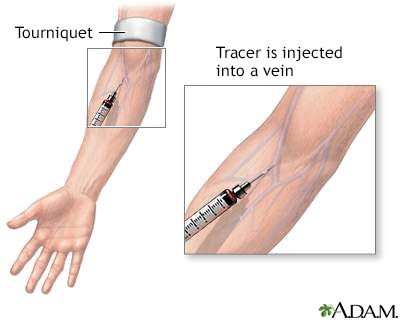Gallbladder radionuclide scan

The gallbladder radionuclide scan is performed by injecting a tracer (radioactive chemical) into the bloodstream. A gamma camera is used to perform the scan. The camera will detect the gamma rays being emitted from the tracer, and the image of where the tracer is found in the organs is transmitted to a computer. This test is very good for detecting acute infection (cholecystitis) or blockage of a bile duct. It is also helpful in determining whether there is rejection of a transplanted liver.

|
Review Date:
1/1/2025 Reviewed By: Jason Levy, MD, FSIR, Northside Radiology Associates, Atlanta, GA. Also reviewed by David C. Dugdale, MD, Medical Director, Brenda Conaway, Editorial Director, and the A.D.A.M. Editorial team. |
The information provided herein should not be used during any medical emergency or for the diagnosis or treatment of any medical condition. A licensed medical professional should be consulted for diagnosis and treatment of any and all medical conditions. Links to other sites are provided for information only -- they do not constitute endorsements of those other sites. No warranty of any kind, either expressed or implied, is made as to the accuracy, reliability, timeliness, or correctness of any translations made by a third-party service of the information provided herein into any other language. © 1997-
A.D.A.M., a business unit of Ebix, Inc. Any duplication or distribution of the information contained herein is strictly prohibited.
